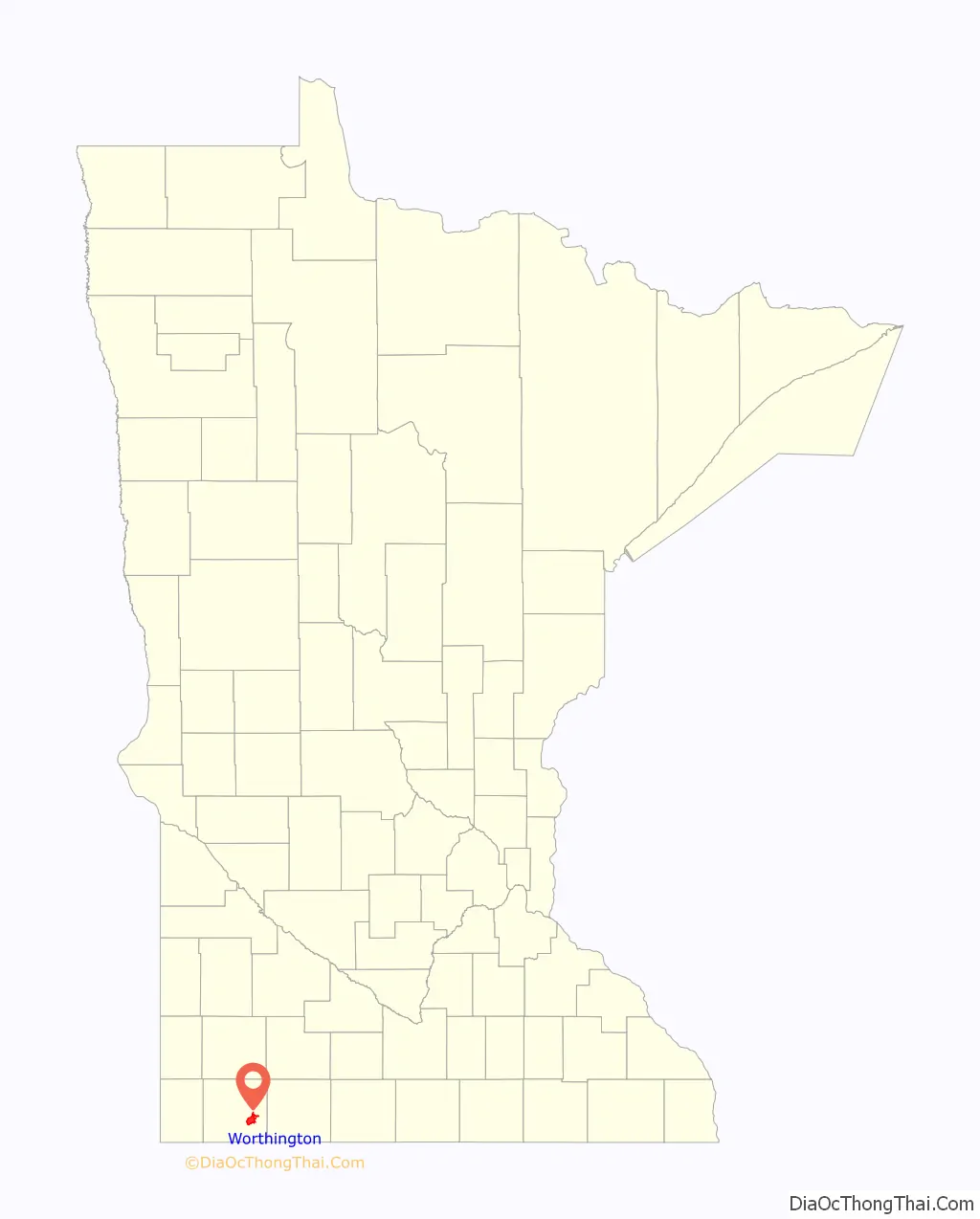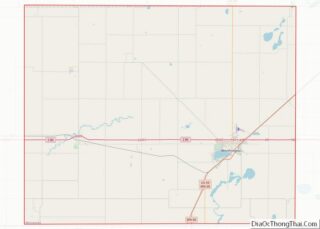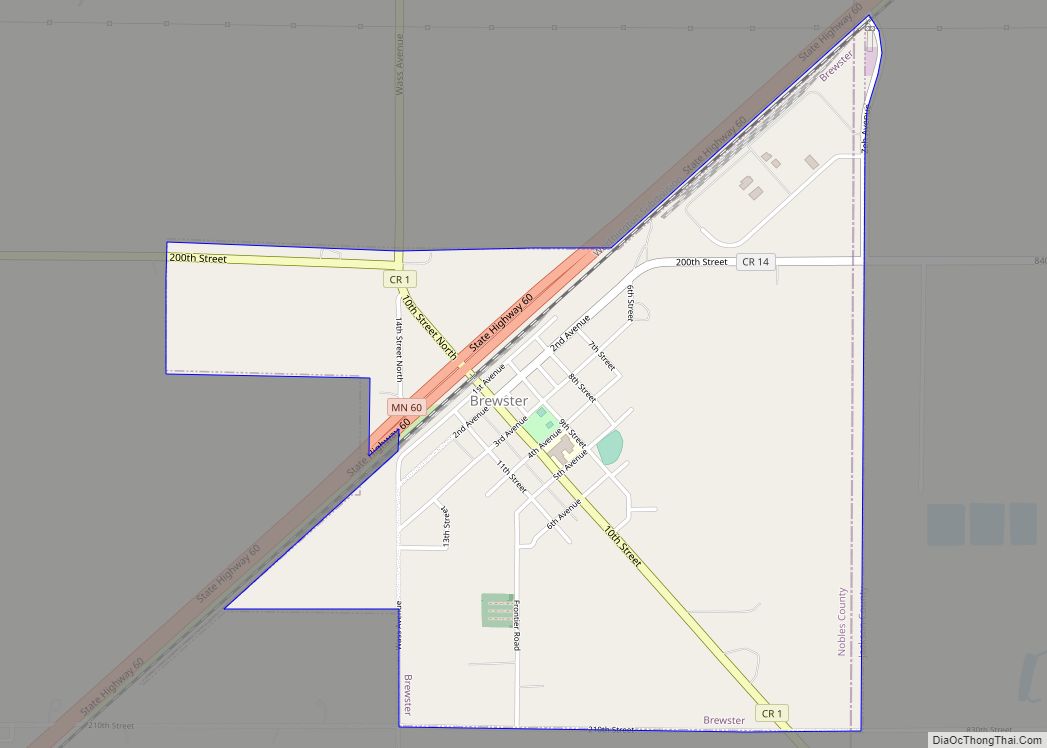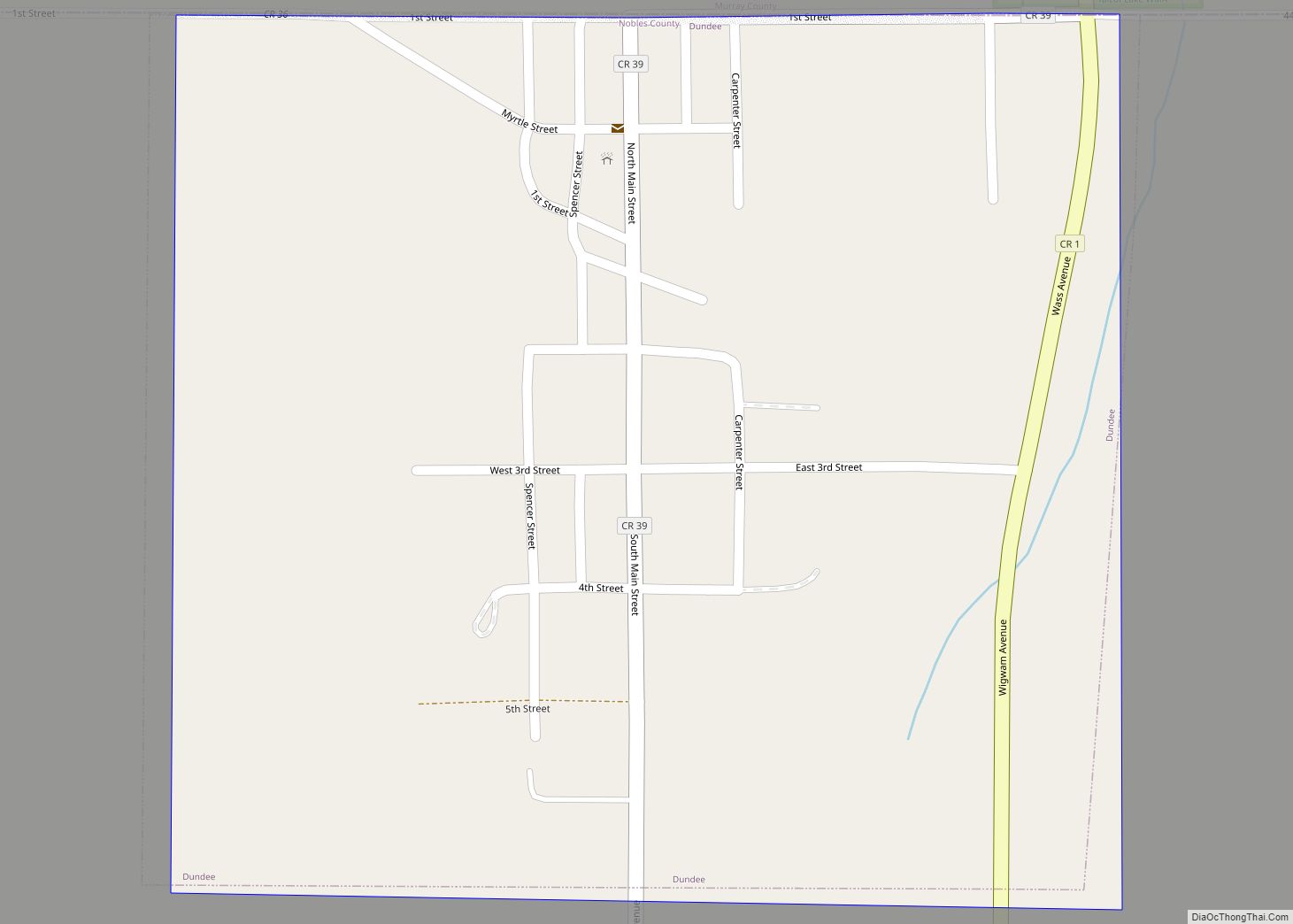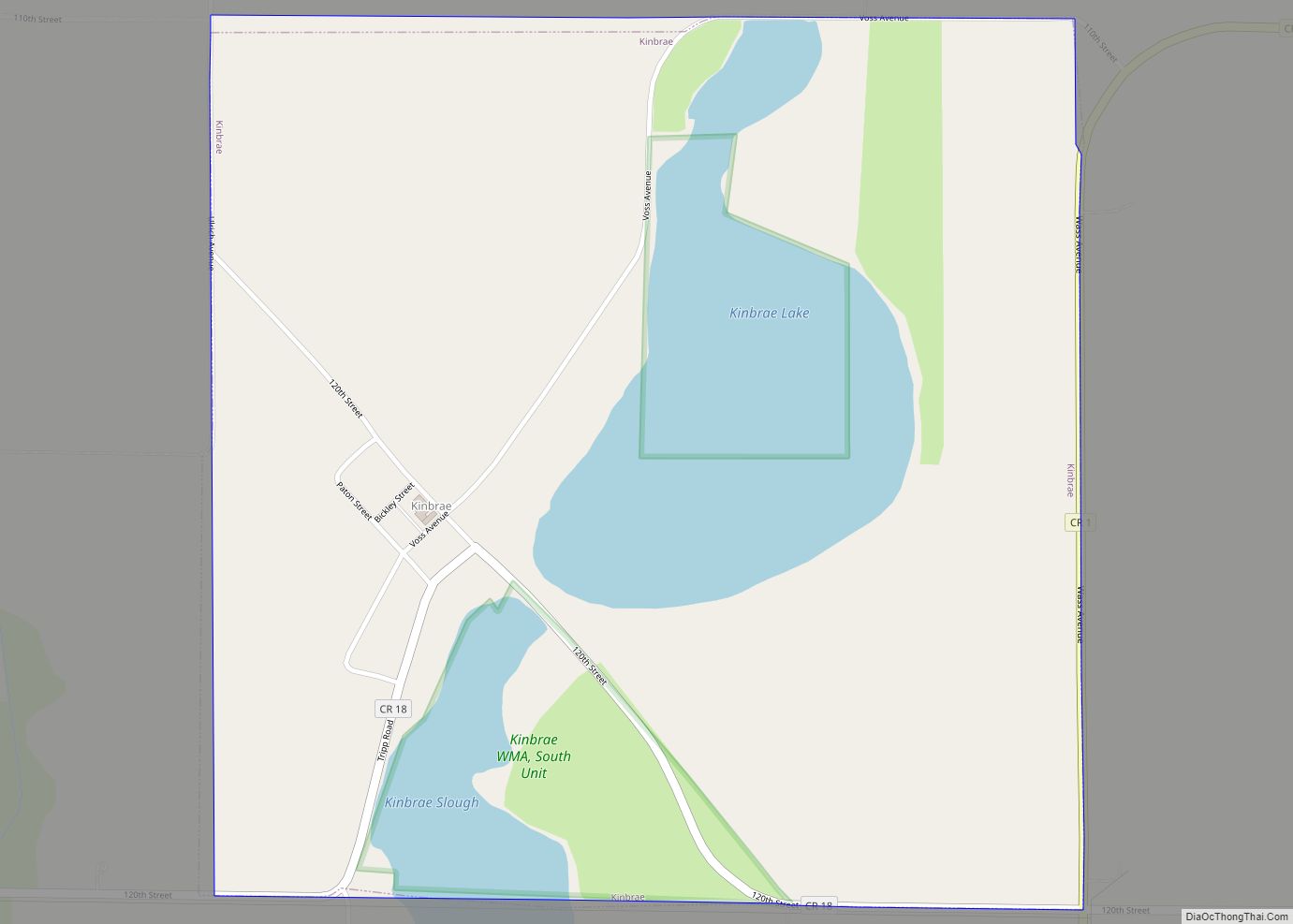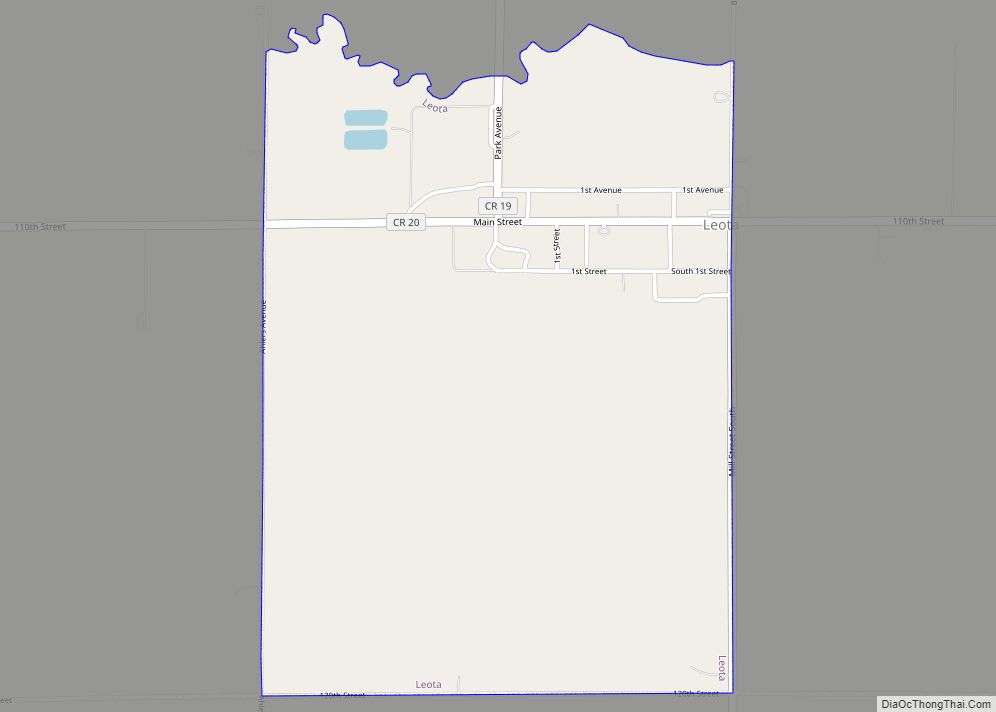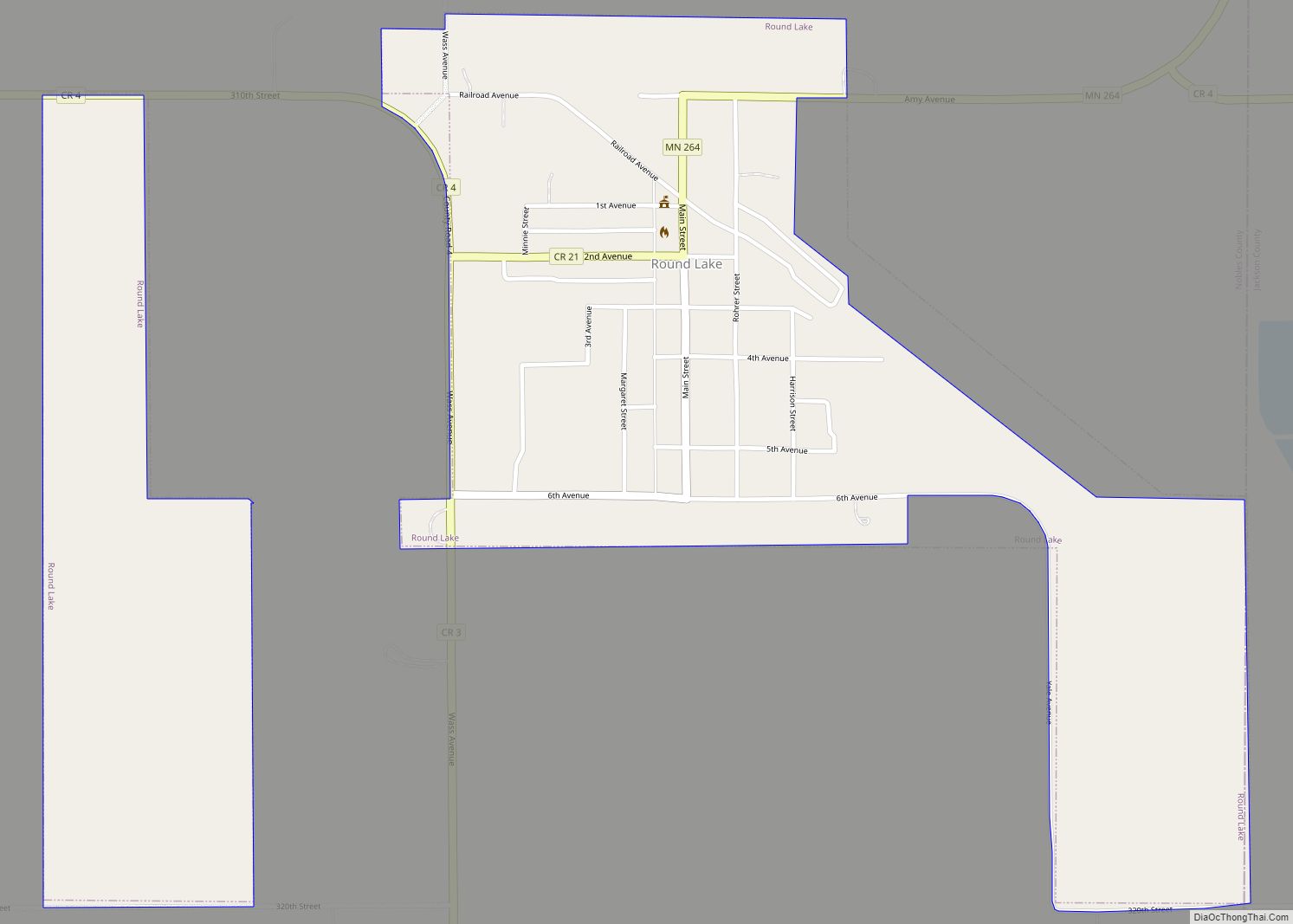Worthington is a city in and the county seat of Nobles County, Minnesota, United States. The population was 13,947 at the time of the 2020 census.
The city’s site was first settled in the 1870s as Okabena Station on a line of the Chicago, St. Paul, Minneapolis and Omaha Railway, later the Chicago and North Western Railway (now part of the Union Pacific Railroad) where steam engines would take on water from adjacent Lake Okabena. More people entered, along with one A. P. Miller of Toledo, Ohio, under a firm called the National Colony Organization. Miller named the new city after his wife’s maiden name.
| Name: | Worthington city |
|---|---|
| LSAD Code: | 25 |
| LSAD Description: | city (suffix) |
| State: | Minnesota |
| County: | Nobles County |
| Elevation: | 1,591 ft (485 m) |
| Total Area: | 9.33 sq mi (24.15 km²) |
| Land Area: | 7.94 sq mi (20.56 km²) |
| Water Area: | 1.39 sq mi (3.59 km²) |
| Total Population: | 13,947 |
| Population Density: | 1,756.55/sq mi (678.22/km²) |
| ZIP code: | 56187 |
| Area code: | 507 |
| FIPS code: | 2771734 |
| GNISfeature ID: | 0654391 |
Online Interactive Map
Click on ![]() to view map in "full screen" mode.
to view map in "full screen" mode.
Worthington location map. Where is Worthington city?
History
The first European likely to have visited the Nobles County area of southwestern Minnesota was French explorer Joseph Nicollet. Nicollet mapped the area between the Mississippi and Missouri Rivers in the 1830s. He called the region “Sisseton Country” in honor of the Sisseton band of Dakota Indians then living there. It was a rolling sea of wide open prairie grass that extended as far as the eye could see. One small lake in Sisseton Country was given the name “Lake Okabena” on Nicollet’s map, “Okabena” being a Dakota word meaning “nesting place of the herons”.
The town of Worthington was founded by “Yankees” (immigrants from New England and upstate New York who were descended from the English Puritans who settled New England in the 1600s).
In 1871, the St. Paul & Sioux City Railway Company began connecting its two namesake cities with a rail line. The steam engines of that time required a large quantity of water, resulting in water stations being needed every eight to twelve miles (13 to 19 km) along their routes. One of these stations, at the site of present-day Worthington, was designated “The Okabena Railway Station”.
Meanwhile, in that same year, Professor Ransom Humiston of Cleveland, Ohio, and Dr. A.P. Miller, editor of the Toledo Blade, organized a company to locate a colony of New England settlers who had already settled in Northern Ohio along the tracks of the Sioux City and St. Paul Railway. These people were “Yankee” settlers whose parents had moved from New England to the region of Northeast Ohio known as the Connecticut Western Reserve. They were primarily members of the Congregational Church, though due to the Second Great Awakening, many of them had converted to Methodism and Presbyterianism, and some had become Baptists before coming to what is now Minnesota. This colony, the National Colony, was to be a village of temperance, a place where evangelical Methodists, Presbyterians, Congregationalists, and Baptists could live free of the temptations of alcohol. A town was plotted, and the name was changed from the Okabena Railway Station to Worthington, Miller’s mother-in-law’s maiden name.
On April 29, 1872, regular passenger train service to Worthington started, and on that first train were the first of the National Colony settlers. One early arrival described the scene:
We were among the first members of the colony to arrive at the station of an unfinished railroad… There was a good hotel, well and comfortably furnished, one or two stores neatly furnished and already stocked with goods, [and] several other[s] in process of erection… The streets, scarcely to be defined as such, were full of prairie schooners, containing families waiting until masters could suit themselves with “claims,” the women pursuing their housewifely avocations meanwhile—some having cooking stoves in their wagons, others using gypsy fires to do their culinary work; all seeming happy and hopeful.
Some settlers from New England were drinking men, most of them Civil War veterans from Massachusetts and Maine, and they came into conflict with the temperance movement. A curious event took place on Worthington’s very first Fourth of July celebration. Hearing that there was a keg of beer in the Worthington House Hotel, Humiston entered the hotel, seized the keg, dragged it outside, and destroyed it with an axe. A witness described what happened next:
Upon seeing this, the young men of the town thought it to be rather an imposition, and collected together, procured the services of the band, and under the direction of a military officer marched to the rear of the hotel, and with a wheelbarrow and shovel took the empty keg that had been broken open, and playing the dead march with flag at half staff marched to the flagpole in front of Humiston’s office where they dug a grave and gave the empty keg a burial with all the honors attending a soldier’s funeral.
They then, with flag at full mast and with lively air, marched back to the ice house, procured a full keg of beer, returning to the grave, resting the keg thereon. Then a general invitation was given to all who desired to partake, which many did until the keg was emptied… In the evening they reassembled, burning Prof. Humiston in effigy about 10 p.m. Thus ended the glorious Fourth at Worthington, Minn.
Despite tensions between pro- and anti-temperance factions, the town grew rapidly. By the end of summer in 1872, 85 buildings had been constructed where just one year before there had been only a field of prairie grass.
Settlers poured into the region. At first they came almost exclusively from the six New England states due to issues of overpopulation combined with land shortages. Some had come from Upstate New York and had parents and grandparents who had moved to that region from New England during the early 1800s and late 1700s. Due to the large number of New Englanders and New England transplants from upstate New York, Worthington, like much of Minnesota at the time, was very culturally continuous with early New England culture for much of its early history. It was the age of the Homestead Act, when 160 acres (0.65 km) of government land could be claimed for free. All one had to do was live on the land and “improve” it, a vague requirement. In such an atmosphere, settlers without connection to the National Colony also arrived in great number, and few of those were temperance activists. The ensuing winter was severe, and swarms of grasshoppers stripped farmers’ fields bare in the summer of 1873. Still, settlers came. 1874 produced a bumper harvest, followed by another grasshopper invasion in 1875. 1876 and 1877 were both good farming years. Grasshoppers returned for the last time in 1879, and a bright future began for southwestern Minnesota. According to the 1880 census, Nobles County had 4,435 residents, 636 of them in Worthington.
In the early 1900s German immigrants began arriving in Worthington in large numbers, not directly from Germany, but mostly from other places in the midwest, especially Ohio, where their communities had already been established.
Unlike in other parts of the country, the Germans did not face xenophobia in Nobles County, but were welcomed by the Yankee population. This led to many writing back to Ohio, which led to chain migration to the region, greatly increasing the German-American population. The “Yankee” population of Americans of English descent did not come into conflict with the German-American community for much of their early history together, but the two communities were divided on the issue of World War I, the Yankee community divided about and the Germans unanimously opposed to American entry into the war. The Yankee community was generally pro-British, but many also did not want the United States to enter the war. The Germans were sympathetic to Germany and did not want the United States to enter into a war against Germany, but the Germans were not anti-British. Before World War I, many German community leaders in Minnesota and Wisconsin spoke openly and enthusiastically about how much better America was than Germany, due primarily (in their eyes) to the presence of English law and the English political culture the Americans had inherited from the colonial era, which they contrasted with the turmoil and oppression in Germany they had so recently fled. Other immigrant groups followed the Germans, including settlers from Ireland, Norway and Sweden.
From 1939 to 1940, Worthington was home to the Worthington Cardinals, a minor league baseball team. Worthington played as a member of the Class D Western League. The Worthington Cardinals were an affiliate of the St. Louis Cardinals.
On December 12, 2006, the Immigration and Customs Enforcement (ICE) staged a coordinated predawn raid at the Swift & Company meat packing plant in Worthington and five other Swift plants in western states, interviewing workers and hauling hundreds off in buses.
Worthington Road Map
Worthington city Satellite Map
Geography
According to the United States Census Bureau, the city has an area of 8.74 square miles (22.64 km), of which 7.34 square miles (19.01 km) is land and 1.40 square miles (3.63 km) is water.
Climate
See also
Map of Minnesota State and its subdivision:- Aitkin
- Anoka
- Becker
- Beltrami
- Benton
- Big Stone
- Blue Earth
- Brown
- Carlton
- Carver
- Cass
- Chippewa
- Chisago
- Clay
- Clearwater
- Cook
- Cottonwood
- Crow Wing
- Dakota
- Dodge
- Douglas
- Faribault
- Fillmore
- Freeborn
- Goodhue
- Grant
- Hennepin
- Houston
- Hubbard
- Isanti
- Itasca
- Jackson
- Kanabec
- Kandiyohi
- Kittson
- Koochiching
- Lac qui Parle
- Lake
- Lake of the Woods
- Lake Superior
- Le Sueur
- Lincoln
- Lyon
- Mahnomen
- Marshall
- Martin
- McLeod
- Meeker
- Mille Lacs
- Morrison
- Mower
- Murray
- Nicollet
- Nobles
- Norman
- Olmsted
- Otter Tail
- Pennington
- Pine
- Pipestone
- Polk
- Pope
- Ramsey
- Red Lake
- Redwood
- Renville
- Rice
- Rock
- Roseau
- Saint Louis
- Scott
- Sherburne
- Sibley
- Stearns
- Steele
- Stevens
- Swift
- Todd
- Traverse
- Wabasha
- Wadena
- Waseca
- Washington
- Watonwan
- Wilkin
- Winona
- Wright
- Yellow Medicine
- Alabama
- Alaska
- Arizona
- Arkansas
- California
- Colorado
- Connecticut
- Delaware
- District of Columbia
- Florida
- Georgia
- Hawaii
- Idaho
- Illinois
- Indiana
- Iowa
- Kansas
- Kentucky
- Louisiana
- Maine
- Maryland
- Massachusetts
- Michigan
- Minnesota
- Mississippi
- Missouri
- Montana
- Nebraska
- Nevada
- New Hampshire
- New Jersey
- New Mexico
- New York
- North Carolina
- North Dakota
- Ohio
- Oklahoma
- Oregon
- Pennsylvania
- Rhode Island
- South Carolina
- South Dakota
- Tennessee
- Texas
- Utah
- Vermont
- Virginia
- Washington
- West Virginia
- Wisconsin
- Wyoming

